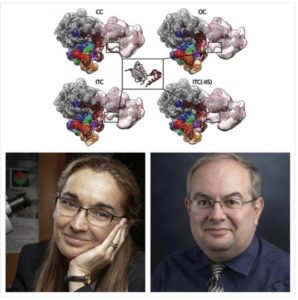 In this TACC podcast, Jorge Salazar interviews Eva Nogales, Professor in the Department of Molecular and Cellular Biology at UC Berkeley and Senior Faculty Scientist and Howard Hughes Medical Investigator at Lawrence Berkeley National Laboratory; and Ivaylo Ivanov, Associate Professor of in the Department of Chemistry at Georgia State University.
In this TACC podcast, Jorge Salazar interviews Eva Nogales, Professor in the Department of Molecular and Cellular Biology at UC Berkeley and Senior Faculty Scientist and Howard Hughes Medical Investigator at Lawrence Berkeley National Laboratory; and Ivaylo Ivanov, Associate Professor of in the Department of Chemistry at Georgia State University.
Scientists have taken the closest look yet at molecule-sized machinery called the human preinitiation complex. It basically opens up DNA so that genes can be copied and turned into proteins. The science team formed from Northwestern University, Berkeley National Laboratory, Georgia State University, and UC Berkeley. They used a cutting-edge technique called cryo-electron microscopy and combined it with supercomputer analysis. They published their results May of 2016 in the journal Nature.
Over 1.4 million ‘freeze frames’ of the human preinitiation complex, or PIC, were obtained with cryo-electron microscopy. They were initially processed using supercomputers at the National Energy Research Scientific Computing Center. This sifted out background noise and reconstructed three-dimensional density maps that showed details in the shape of the molecule that had never been seen before.




